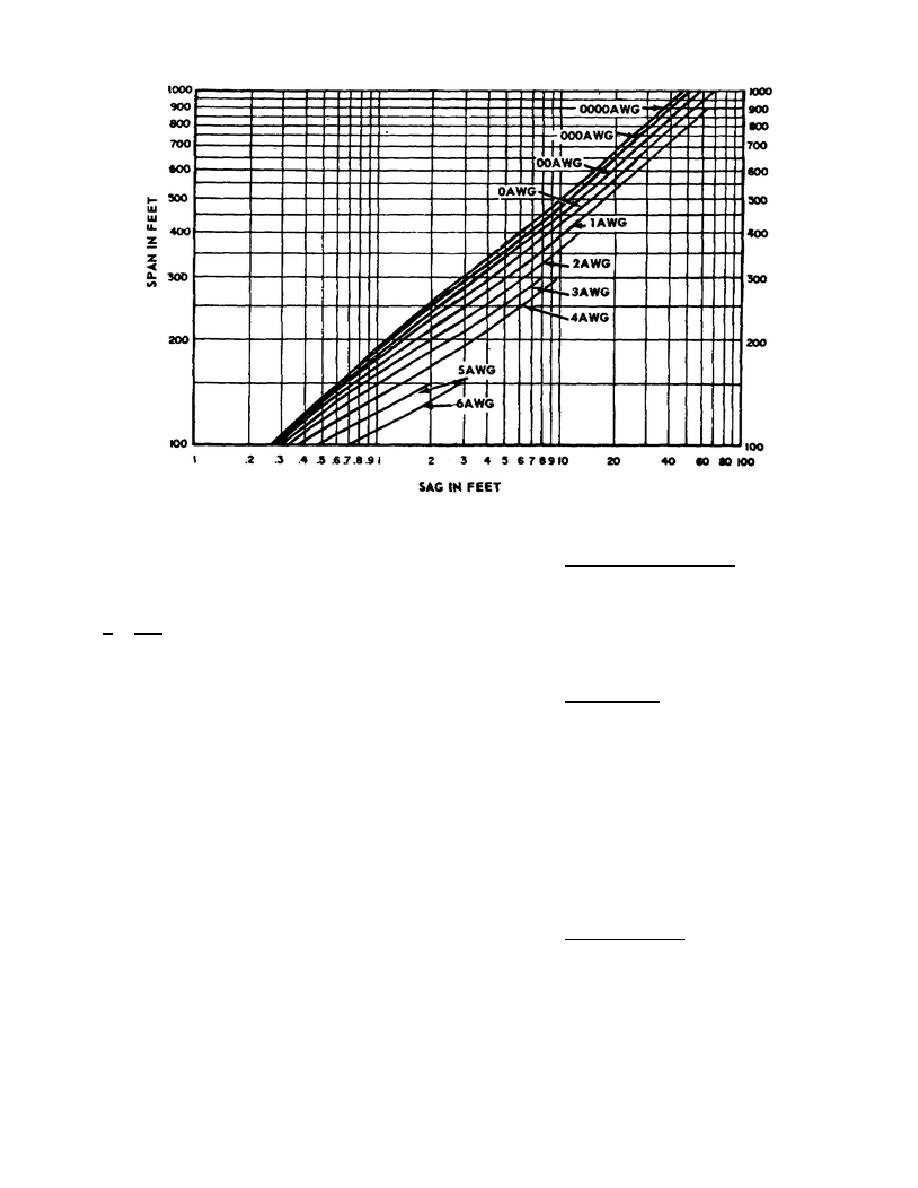
Figure 12.
Sag for one-half ultimate strength of bare hard-drawn copper
conductors.
account materials available, military
(1) Service drop wires.
Table 6
necessity, urgency of the project, and
gives the recommended sag for service
other factors.
drop wires.
Service drops should not
be pulled tighter than indicated by
f. Sag.
Sag
is
the
maximum
the table, except to obtain necessary
departure of a wire in a given span
clearances; sags must never be less
from the straight line between the two
than half those shown.
points of support (fig 11).
Check
sags carefully.
Lift wires free of
(2) Long spans.
Tables 5 and 6
the arm to permit the sags to equalize
have a maximum span given of 150 feet.
when
installing
conductors.
The
This length is normally used for TO
common tendency is to pull small
installations.
However, for high-
copper conductors too tight and to
tension transmission lines much longer
leave
too
much
sag
in
large
spans
will
be
employed.
For
conductors.
When the small wires are
determining sags for spans over 150
pulled too tight, they are likely to
feet, use figure 12 which gives the
break in cold weather or during ice
corresponding sags at a fixed mean
temperature of 60oF. The sags given by
storms.
If they do not break, they
may
stretch,
reducing
the
cross
this figure allow the conductors to be
section of the wire.
Tables 5 and 6
stressed to one-half of their ultimate
give the amount of sag to be used
tensile strength.
ordinarily for line conductors in
distribution systems.
Sags given are
(3) Excessive sag. Excessive sag
such that the conductors will not be
may
often
be
found
on
overstressed under conditions of ice
existing overhead installations, but
and wind.
the
cause
for
the
excess
should
2-18



 Previous Page
Previous Page
